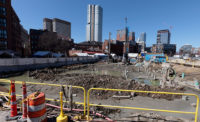A survey of construction workers across the country finds that, at least sometimes, more than half purposefully ignore their training to take "calculated risks" on the worksite.
Mohammed Azeez, a doctoral candidate in the engineering department of Oregon State University, recently completed a nationwide survey of 149 construction workers. He received responses from jobsites in 36 states.
The survey asked workers, "How often do you knowingly take calculated risks, even though it is against your training?" Eighty-two workers reported that they "sometimes" take calculated risks. Another 15 responded that they take such risks "most of the time," while two said they "always take" calculated risks while on the job. By contrast, 50 said they "never" ignore their training to do something they know is risky.
A good percentage of the time, many people take more risk than they should.—John Gambatese, Oregon State University.
"A good percentage of the time, many people take more risk than they should," noted John Gambatese, a workplace safety expert and professor of civil and construction engineering at the university. Gambatese is overseeing Azeez's survey work. "We don't know the severity and magnitude of the risks, but the number of times someone actually takes a calculated risk, even though it's against their training, is an issue."
The commonplace risk-taking does not come as a shock to contractors out in the field.
Jim Slack, president of Houston-based Slack & Co. Contracting Inc., a utility and earthwork contractor, prides himself on his company's safety ethic. But he continues to see other contractors' workers in the field routinely take risks that could lead to accidents.
Slack sees workers fail to follow good trench safety practices, such as ingress and egress ladders, and failing to post a watchman or fencing to keep people out.
"If they take some safety shortcuts, that can save them some money in the short term. But once you have an accident, all those savings get wiped out," Slack says. "We are a safe company," he says, noting that his company has recently won safety awards.
Azeez is now gearing up for the next phase of his research, which will involve in-depth interviews with construction workers to gather more details on risk-taking and what drives it.
This second phase is crucial. In the field, there is a need for research that goes beyond simply evaluating risk to discovering what motivates workers to take chances, Gambatese notes.
The motivation question has been studied much less. There are a myriad of potential reasons.
"We often talk about risk and safety," Gambatese said. "We need to focus on the risk, but we also need to focus on the reward."






Post a comment to this article
Report Abusive Comment